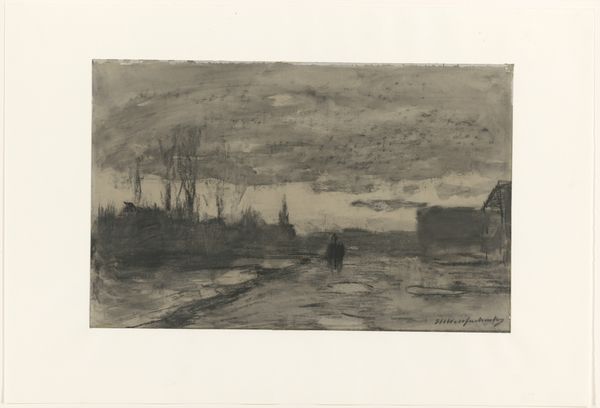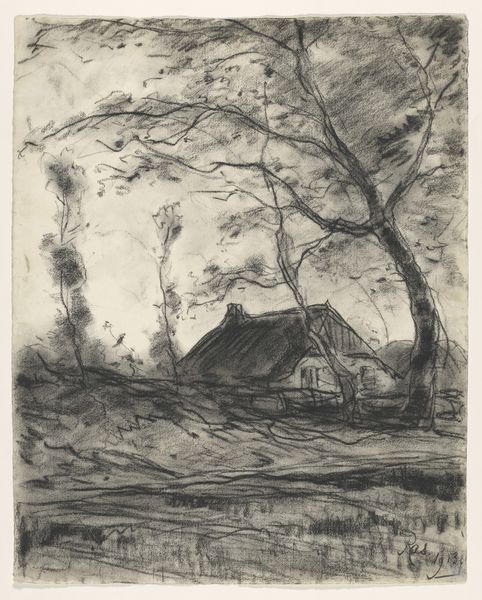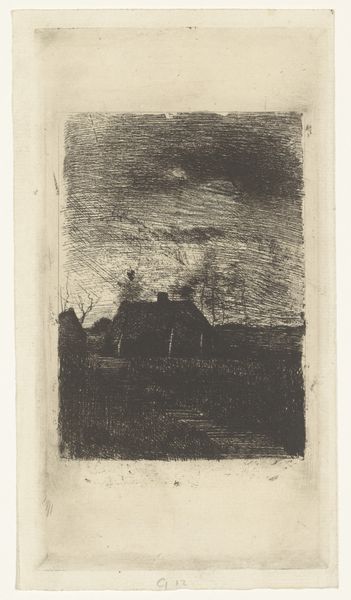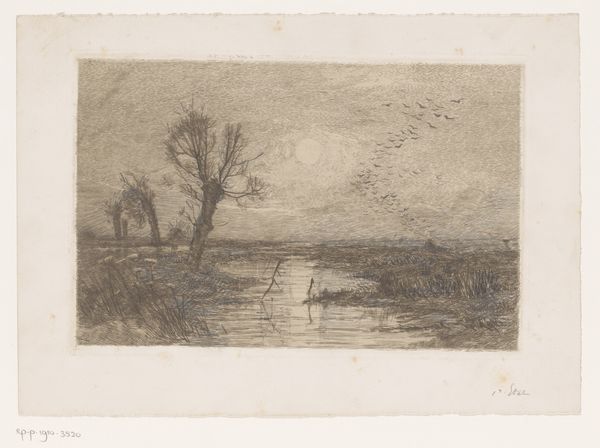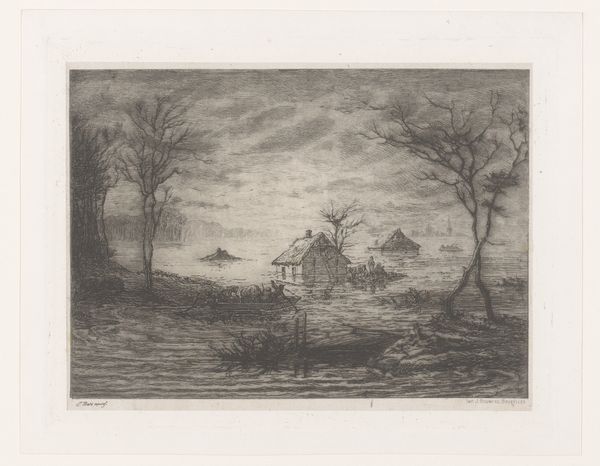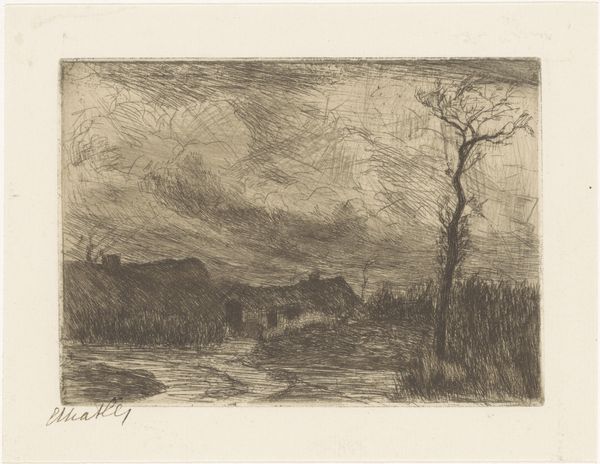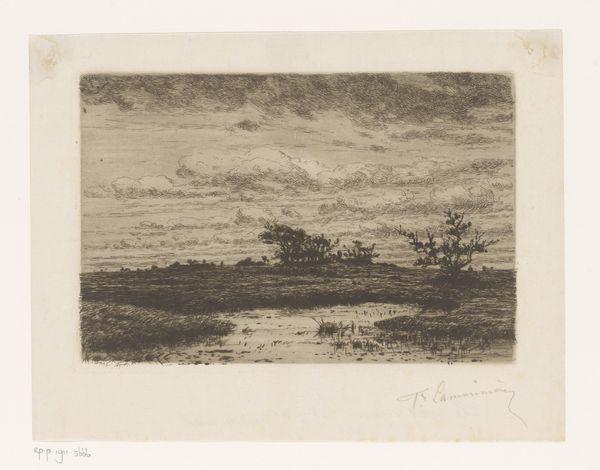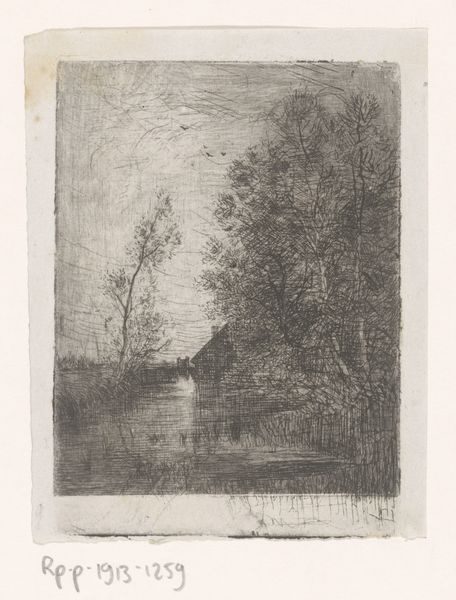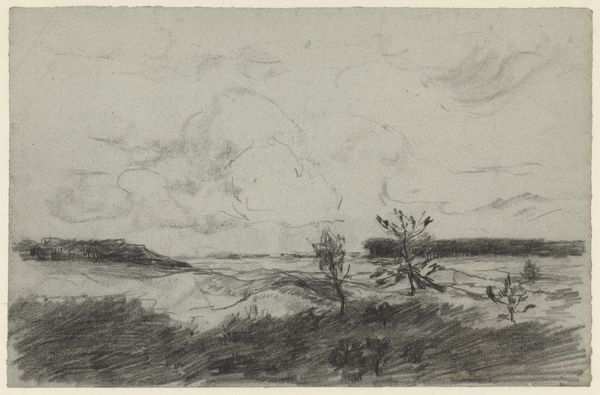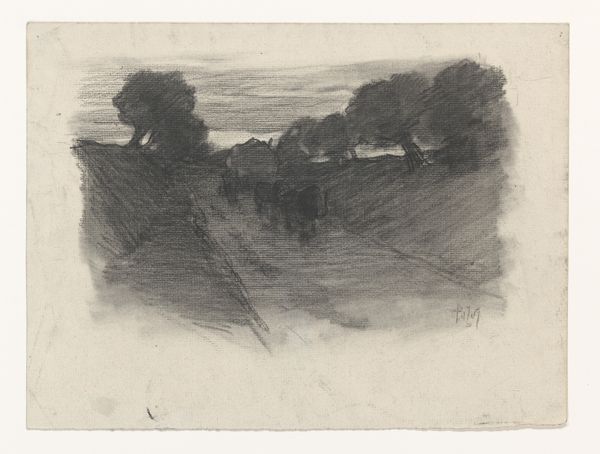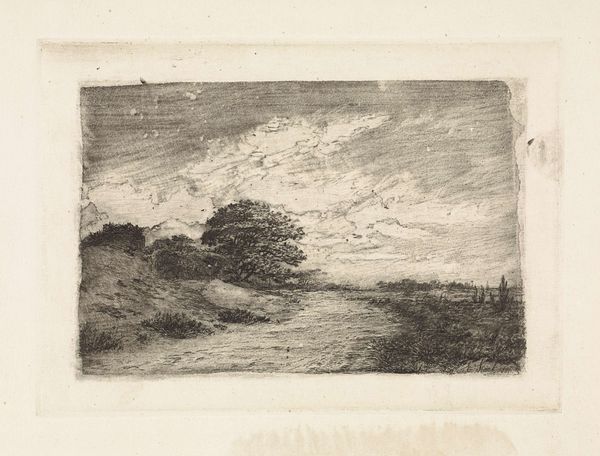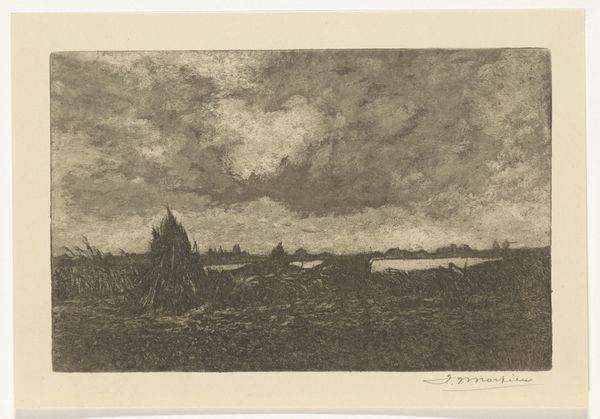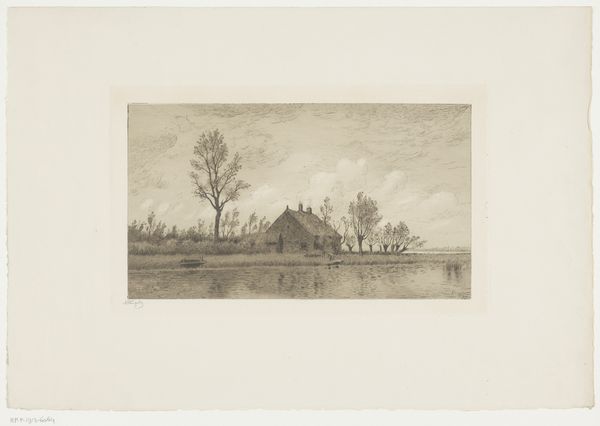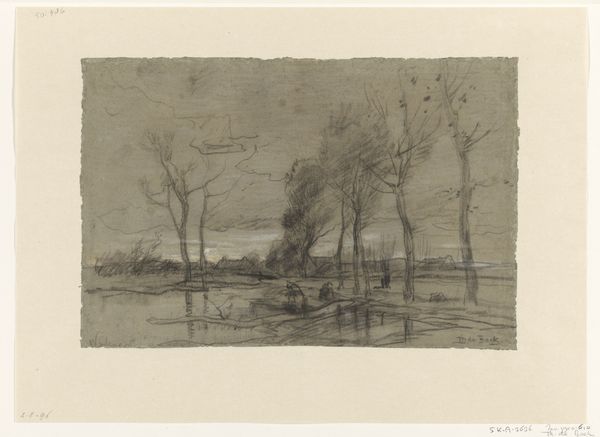
Dimensions: height 345 mm, width 345 mm
Copyright: Rijks Museum: Open Domain
Curator: Here we have Wilhelmus Johannes Steenhoff’s “Landschap bij maanlicht,” or “Landscape by Moonlight,” created sometime between 1873 and 1932. It's currently part of the Rijksmuseum's collection, rendered with pencil and watercolor. Editor: Well, "moonlight" is generous. It looks more like a bruised twilight struggling to swallow everything whole. The light feels hesitant, a nervous flicker. And is that supposed to be buildings down there? They look more like lumps under a shroud. Curator: Steenhoff worked in a period that saw a burgeoning interest in the Dutch landscape and national identity. Works like these were a reaction against the rapid industrialization that transformed the Netherlands. Editor: Ah, so this is a postcard from simpler times, filtered through the artist's anxieties, perhaps? The soft edges, the grey palette – it definitely whispers, rather than shouts. It's funny how a "landscape" can be more about the internal weather than the external one. Curator: Steenhoff uses delicate pencil work combined with washes of watercolor to capture what seems like a transient moment. This piece resonates with Impressionistic aesthetics that privilege capturing sensory impressions. Editor: Yeah, you can almost feel the damp air clinging to your skin, and hear that lonely rustle of reeds in the distance. This makes me think about how even the most objective attempt to capture a landscape always says something about the artist’s mood, anxieties or desires. Curator: The play between darkness and subtle highlights draws attention to the flattening effects of the moonlight, suggesting a tranquil observation of rural life... although maybe you're right, tinged with the worry of a changing world. Editor: Exactly. And the fact it is on paper just intensifies that feeling of something so transient. It could blow away any moment. I wonder, did he know back then that art like this would now hang on museum walls, symbols of that world they left behind? Food for thought, eh? Curator: Indeed. An invitation to remember what was, while understanding our role in its unfolding story. Editor: Absolutely, I can only suggest the viewer to spend more time just wondering about their inner-weather, as opposed to Steenhoffs'.
Comments
No comments
Be the first to comment and join the conversation on the ultimate creative platform.
